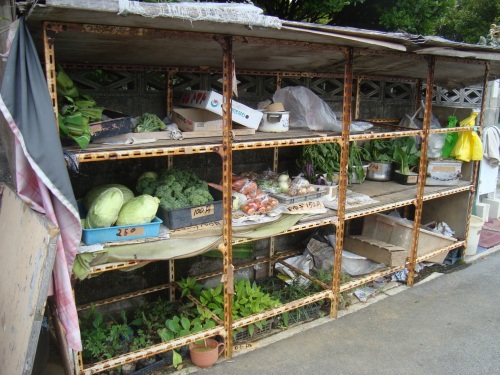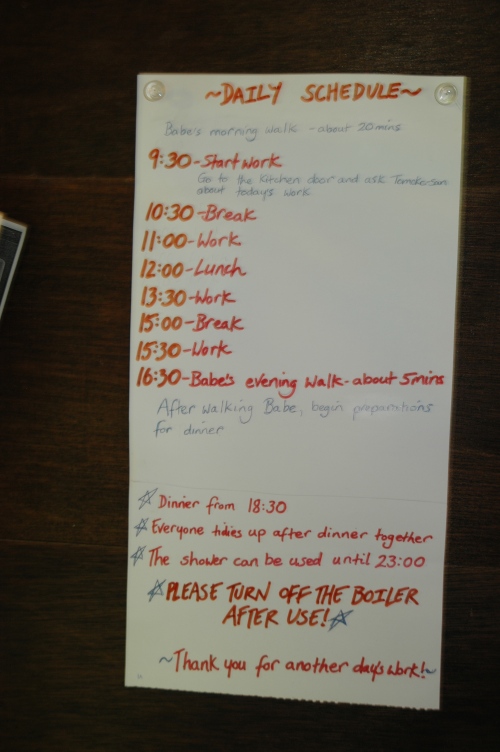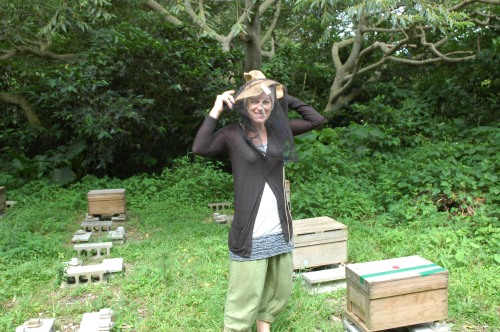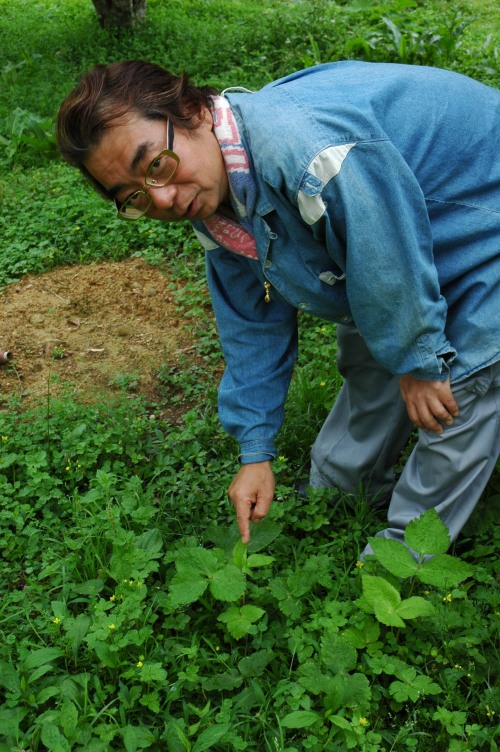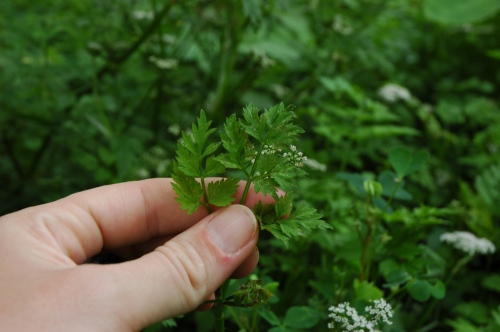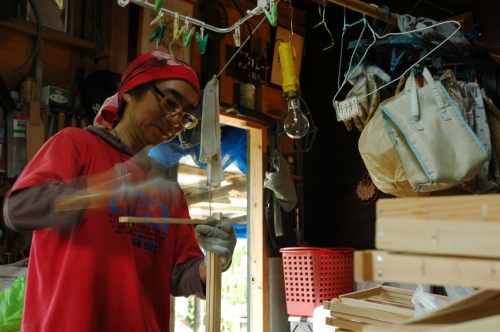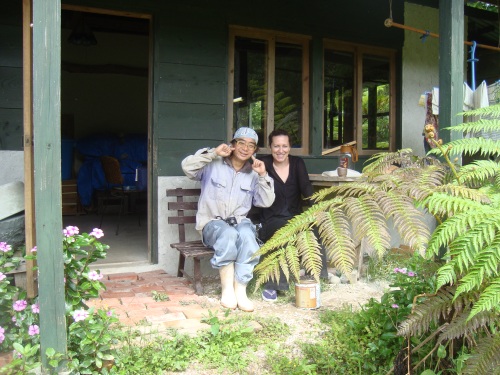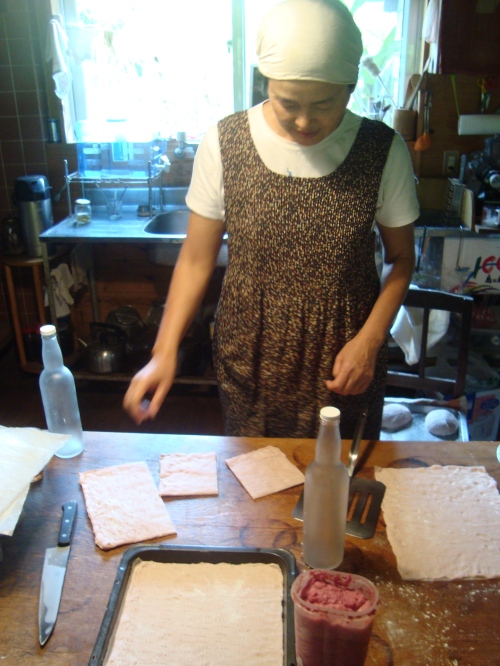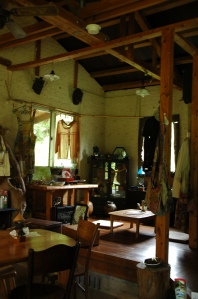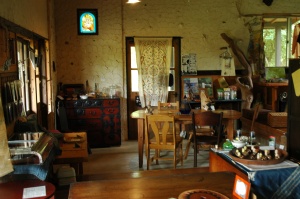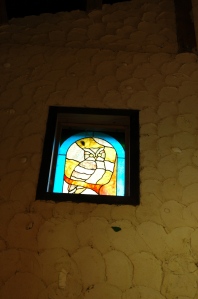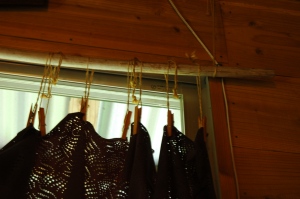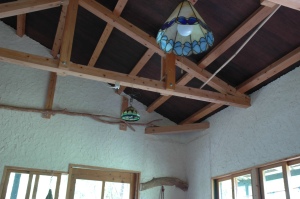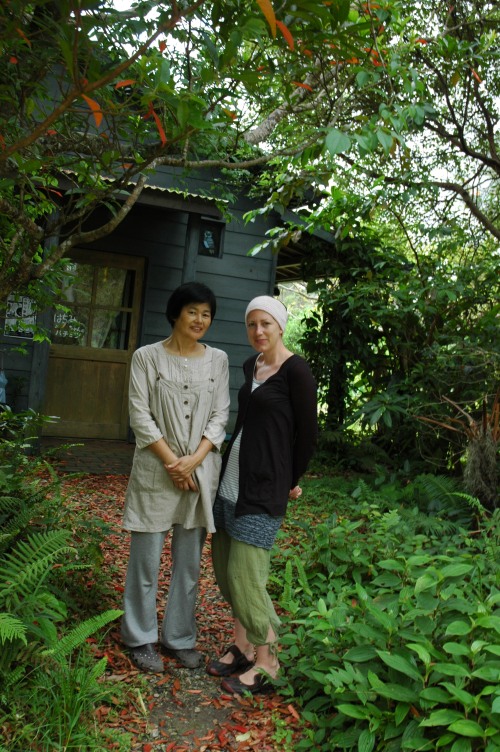
Dame, dame, dame!Tomoko san and I
I have to write this post as I don’t want people thinking wwoofing is a walk in the park and paint a scene through rose coloured spectacles. Sometimes the work is physically challenging, mundane and you can ask yourself why you’re doing it, well I had one of those moments today. The Japanese, be warned, are extremely particular.

Akira san (my fellow wwoofer) in front of one of the wonderful dinners he prepared
Today I had a succession of “dames” from Tomoko san-in Japanese it means “No, not like that!” I broke the eggs in the wrong place, tried to make a Japanese salad dressing that was wrong, used the wrong cloth and covered the rice the wrong way when re-heating it in the microwave. Regarding the latter, is there really a technique?!
I was then told that I’d have to cook dinner solo from now on, “English cooking ok” but there’s only Japanese ingredients in the kitchen and I don’t have a cookbook. I started to panic. So add together my “dames” throughout the day, solo cooking on the horizon, someone speaking Japanese at me for most of the day in a pace that I can’t really keep up with and a hormonal time of the month I temporarily crumbled. I went for a walk.
In my opinion, the success of wwoofing depends on 3 things; your host, your fellow wwoofers and the work itself. If all 3 are relatively good the chances you’ll enjoy it and get real value from your time wwoofing. Needless to say that if the wwoof hosts are taking a slight advantage of the volunteers (it can happen!), your fellow wwoofer is sweet but doesn’t speak a word of English and the work is really long hours then you’re heading for a disappointment. Make sure also that you factor in time to travel and see Japan in between your wwoofing hosts and don’t bank on having time to see the place you’re living whilst you’re wwoofing. Here I have 1 day off a week and since we’re in the jungle it’s hard to get anywhere without a car (luckily for me Akira san drives)
This is how it is wwoofing in Japan, it can sometimes get frustrating but on the other hand if you can stay patient it can be rewarding, read other posts to as proof!
Read Full Post »

